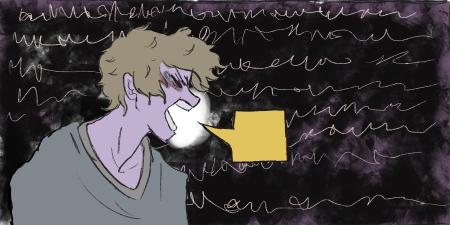Abstract
Clinicians have ethical and legal obligations to report suspected maltreatment of children. A decision to report suspected abuse is one of great ethical, clinical, and legal importance and can weigh heavily on clinicians who have established relationships with a family. Mandated reporting is done inequitably, however, with overreporting of families with low socioeconomic status and minoritized families and underreporting of families with high socioeconomic status and White families. This article canvasses evidence-based approaches to evaluating and reporting suspicion of child maltreatment in ways that minimize bias and promote equity.
Case
A 9-month-old boy is brought to an emergency department (ED) by his mother. The baby’s mother reports that she slipped in an icy parking lot while lifting the baby from the car seat. She reports that, as she fell to the ground, the baby slipped out of her hands, hitting his head on the icy concrete. Physical examination of the baby reveals right-sided scalp swelling and multiple bruises on the torso and extremities. When asked about the bruises, the mother panicked, stating, “I didn’t think to check under my baby’s clothes. It was too cold. I just drove right here.” The ED physician and nurse caring for the baby are distressed by the severity of the baby’s injuries. The physician reviews the baby’s electronic health record (EHR). Notes from an ED visit 6 months ago include photographic and narrative documentation of 2 bruises on the then-3-month-old baby’s right arm. The physician and nurse confer quietly about what they observed, what they know, and how to respond.
Commentary
The federal Child Abuse Prevention and Treatment Act (CAPTA) of 1974 and Victims of Child Abuse Act Reauthorization Act of 2018 seek to protect children from abuse and neglect. This federal legislation provides funding to support the prevention, assessment, investigation, prosecution, and treatment of child abuse and neglect and establishes a federal definition of child abuse and neglect.1 CAPTA also requires states to implement reporting procedures.2
Forty-four states, the District of Columbia, and US territories have designated professionals and other persons, including clinicians, to report suspected child abuse and neglect to community agencies in accordance with federal law.2 Standards for reporting vary by state, but a mandated reporter who suspects, has knowledge, or believes that a child has been abused or neglected is required to report.2 A reporter does not need to be certain or to prove that abuse or neglect occurred. This threshold for reporting is intended to identify children who are being abused, minimize harm, and prevent further abuse. Thus, individual mandated reporters may act without evidence-based protocols based on their own interpretation of CAPTA criteria, often relying on their intuition and “gut” feelings.
Gut Feelings as Sources of Bias
The Centers for Disease Control and Prevention cites a combination of individual, relational, community, and societal factors that contribute to the risk of child abuse and neglect. These risk factors include caregiver characteristics such as substance use, mental health issues, low educational attainment, young age, and low income.3 However, clinicians must interpret social risk factors and apply them in practice in ways that do not perpetuate bias.
Overrepresentation of children of color in the child welfare system, possibly due to racism, has been well documented.4,5,6 Racial inequity can occur at any step along the child welfare continuum, starting with the initial reporting of suspected child abuse and neglect to child protective services (CPS). Black children are more likely than White children to be reported (excepting those of low socioeconomic status).4,7 Additionally, once reported to CPS, Black children are more likely to have their cases opened for investigation and are at a greater risk of being placed in out-of-home care than White children.6 For example, in 2019, Black children accounted for 23% of the foster care population but represented only 14% of the child population, while White children accounted for 44% of the foster care population but made up half of the child population.6
Although children may be removed from their birth family to prevent abuse or neglect, foster care system involvement can have adverse outcomes. For children, removal from their home is traumatic. Often children enter foster care with unmet health needs and are at increased risk for medical, developmental, and behavioral health problems related to their childhood trauma.8 Additionally, they have poor educational outcomes, with more than 40% of school-aged children in foster care having educational difficulties.9 Unfortunately, many of these needs persist while the children are in foster care.
In the case example, the clinicians must decide if mandated reporting is warranted and if a medical evaluation for additional injuries is indicated. Despite the existence of evidence-based clinical guidelines for child maltreatment, several studies have demonstrated clinician bias in the clinical evaluation of symptoms.10,11 Abusive head trauma has been shown to be unrecognized more often in young White infants than in minority infants and in infants from “intact” families than in families in which the parents were not living together.12 Additionally, underrepresented minority children are more likely than White children—and children without private insurance are more likely than those with private insurance—to be evaluated with a skeletal survey and reported for suspected abuse.13,14,15
Responding to Suspicion
In addition to weighing complex decisions about initiating a medical evaluation to identify occult injury and engaging CPS, clinicians may also face the moral distress of realizing that they do not believe the history provided by the caregiver to account for the injuries. Clinicians who work with young children are accustomed to obtaining a medical history by proxy from caregivers. In most cases, these histories are reliable and can be trusted. However, when a caregiver provides a history of an injury that does not account for the injury, when the history of the injury changes, or when a child with no history of injury presents for an injury, clinicians may be hesitant to challenge the caregiver or report this concern to CPS due to fear of disrupting their relationship with and trust in the caregiver. Clinicians may also be concerned about negative professional consequences, such as testifying in court or being sued, despite US immunity statutes protecting mandated reporters.16,17
Despite the existence of evidence-based clinical guidelines for child maltreatment, several studies have demonstrated clinician bias in the clinical evaluation of symptoms.
These factors, if present, could tempt clinicians to avoid discussing suspected abuse with family members. It is critical for the safety of the patient and other children sharing the same care environment that clinicians persevere through their discomfort and explain their concerns using clear and nonjudgmental language. While clinicians might be uncomfortable saying the word abuse to caregivers, family-centered care continues to be a priority and is important in fostering trust and partnership with families. Caregivers have a right to know and understand their child’s medical condition, including concerns about physical abuse. As clinicians, we are ethically bound to clearly convey concerns about physical abuse so that caregivers can partner with us in protecting their child. In the case example, the clinicians could share their concerns with the mother to provide anticipatory guidance about next steps and help her understand potential safety risks for her child.
Determining whether one’s suspicion for abuse is just can be complex. Failure to recognize or report abuse can result in dire consequences for children; however, reporting concerns of child maltreatment inappropriately can lead to unnecessary stress for children and their families, unwarranted removal of a child from their caregiver, and overburdening of an already strained child welfare system. Several strategies may be helpful as a self-check, including consulting with a child abuse pediatrician or another clinician for an independent assessment. When considering the clinical history, clinicians must focus on the factual, specific details provided by caregivers and on identified injuries while minimizing attention to subjective information or potential risk factors. Patient safety tools, such as STAR (stop, think, act, review), can provide a framework for clinicians to reflect on cases. For example, Nationwide Children’s Hospital, with which we are affiliated, used STAR as an approach to child abuse cases in conjunction with a clinical guideline.
- Stop: Have you considered child abuse?
- Think: What is known and what is uncertain.
- Act: Call social work or child abuse team.
- Review: Did you follow guidelines?
Without STAR, clinicians may fall into the habit of relying on risk factors, such as socioeconomic status—which has long been used as a red flag for identifying populations of children at high risk of physical abuse—rather than considering each patient’s unique clinical history and physical examination findings. In the case highlighted, the physician and nurse discussed that the bruising would not be expected from the reported accidental history because the boy also had bruises on his abdomen, back, and posterior extremities. Given that he reportedly fell and hit his head and that the mother denied any other accidental injuries, the patterned bruising on his torso and extremities remained unexplained and raised concerns about physical abuse. The clinicians’ response should not be affected by the mother’s race, ethnicity, marital status, income, or educational attainment.
Clinicians must understand the types and patterns of injuries indicative of physical abuse, including how presentations vary by age and plausible accidental injury mechanisms, in order to determine whether the injuries warrant concerns about physical abuse.11 Medical education on the identification of child abuse varies widely, and clinicians cite a lack of certainty about when to be concerned about abuse as a barrier to their recognition of suspicious injuries. 18,19,20,21 Ethical and evidence-based evaluation begins with a foundational knowledge of potential signs and symptoms of physical abuse and, like so many other diagnoses, a thorough history of how the injury occurred. Additionally, clinicians must be aware of how both injuries and mimics of injury can appear differently on different skin tones to avoid misdiagnosis.22
Recommendations for Minimizing Bias
Many institutions have pursued practice standardization by implementing screening tools, clinical guidelines and pathways, and EHR alerts to support clinical decision making about child abuse.23,24,25,26 Recently, to facilitate such decisions, one institution combined a routine screen using a brief series of questions asked by nursing staff with an EHR-embedded clinical decision support tool with triggers based on age-related chief complaints, documented exam findings, orders, and discharge instructions. The researchers found that the screen improved identification of suspected child abuse but that there was no relation between race and odds of a positive screen, which suggests that this approach might improve racial disparities in abuse evaluations.27 While many of these tools are promising, they need to be validated across multiple clinical settings.28 Furthermore, successful use of such tools requires clinician education and buy-in to ensure clinicians’ compliance and effective use of the tools.
In addition to using an evidence-based approach, clinicians must be aware of explicit and implicit biases that everyone brings to their interactions with others. When making decisions about how to act on their concerns about child maltreatment, clinicians should reflect on what evidence exists to support or contradict their suspicion. Incorporating a multidisciplinary team with heterogeneous backgrounds and perspectives can help address bias in medical decision making.29 In this case, the multidisciplinary team should include a social worker to engage caregivers in completing holistic psychosocial evaluations that highlight family strengths and opportunities for support. Social workers are instrumental in partnering with clinicians to ensure that mandated reporting is prompt and accurate and to support clinicians’ communications with the family and community agencies. A hospital child protection team—specifically, a child abuse pediatrician who has specific expertise in injuries in children—can help clinicians review the clinical information, including identified injuries, and gauge the level of concern for physical abuse. This approach could be applied to provide an ending to the case scenario.
A social worker met with the mother and learned that her boyfriend had been caring for the boy while she worked because she could not afford childcare. A skeletal survey was completed and revealed healing rib fractures, which a child abuse pediatrician, after consultation, described as concerning for physical abuse. Social work facilitated a report to CPS, and CPS established a safety plan with the family as part of its ongoing investigation.
Conclusion
Although it is imperative for clinicians to recognize injuries indicative of child abuse in order to engage appropriate community agencies to protect children, they also must be mindful that involvement of these agencies is not benign and that racial and cultural bias results in disproportionate reporting and investigation of families of color. Evidence-based screening, diverse interprofessional team collaboration, and expert consultation can improve diagnostic accuracy of child abuse and neglect.
Finally, we cannot underestimate the toll that identifying and caring for children with suspected child abuse and neglect takes on health care professionals. Understanding the impact these cases have on individuals and teams will reduce compassion fatigue and burnout so that clinicians can continue to work for their most vulnerable patients.
References
-
Child Welfare Information Gateway. About CAPTA: a legislative history. Children’s Bureau, US Department of Health and Human Services; 2019. Accessed October 12, 2022. https://www.childwelfare.gov/pubpdfs/about.pdf
-
Child Welfare Information Gateway. Mandatory reporters of child abuse and neglect. Children’s Bureau, US Department of Health and Human Services; 2019. Accessed October 12, 2022. https://www.childwelfare.gov/pubPDFs/manda.pdf
-
Risk and protective factors. Centers for Disease Control and Prevention. Updated April 6, 2022. Accessed October 19, 2022. https://www.cdc.gov/violenceprevention/childabuseandneglect/riskprotectivefactors.html
-
Dettlaff AJ, Boyd R. Racial disproportionality and disparities in the child welfare system: why do they exist, and what can be done to address them? Ann Am Acad Pol Soc Sci. 2020;692(1):253-274.
-
Cénat JM, McIntee SE, Mukunzi JN, Noorishad PG. Overrepresentation of Black children in the child welfare system: a systematic review to understand and better act. Child Youth Serv Rev. 2021;120:105714.
-
Child Welfare Information Gateway. Child welfare practice to address racial disproportionality and disparity. Children’s Bureau, US Department of Health and Human Services; 2021. Accessed March 11, 2022. https://www.childwelfare.gov/pubpdfs/racial_disproportionality.pdf
- Putnam-Hornstein E, Needell B, King B, Johnson-Motoyama M. Racial and ethnic disparities: a population-based examination of risk factors for involvement with child protective services. Child Abuse Negl. 2013;37(1):33-46.
-
Szilagyi MA, Rosen DS, Rubin D, Zlotnik S; Council on Foster Care, Adoption, and Kinship Care; Committee on Adolescence; Council on Early Childhood. Health care issues for children and adolescents in foster care and kinship care. Pediatrics. 2015;136(4):e1131-e1140.
- Jee SH, Szilagyi M, Ovenshire C, et al. Improved detection of developmental delays among young children in foster care. Pediatrics. 2010;125(2):282-289.
-
Palusci VJ, Botash AS. Race and bias in child maltreatment diagnosis and reporting. Pediatrics. 2021;148(1):e2020049625.
-
Christian CW, Crawford-Jakubiak JE, Flaherty EG, et al; Committee on Child Abuse and Neglect, American Academy of Pediatrics. The evaluation of suspected child physical abuse. Pediatrics. 2015;135(5):e1337-e1354.
- Jenny C, Hymel KP, Ritzen A, Reinert SE, Hay TC. Analysis of missed cases of abusive head trauma. JAMA. 1999;281(7):621-626.
- Lane WG, Rubin DM, Monteith R, Christian CW. Racial differences in the evaluation of pediatric fractures for physical abuse. JAMA. 2002;288(13):1603-1609.
-
Paine CW, Wood JN. Skeletal surveys in young, injured children: a systematic review. Child Abuse Negl. 2018;76:237-249.
-
Hymel KP, Laskey AL, Crowell KR, et al; Pediatric Brain Injury Research Network (PediBIRN) Investigators. Racial and ethnic disparities and bias in the evaluation and reporting of abusive head trauma. J Pediatr. 2018;198:137-143.e1.
- Flaherty EG, Sege R. Barriers to physician identification and reporting of child abuse. Pediatr Ann. 2005;34(5):349-356.
-
Child Welfare Information Gateway. Immunity for reporters of child abuse and neglect. Children’s Bureau, US Department of Health and Human Services; 2018. Accessed July 20, 2022. https://www.childwelfare.gov/pubPDFs/immunity.pdf
-
Mandadi AR, Dully K, Brailsford J, et al. A national survey of pediatric emergency medicine physicians on improving education in child maltreatment recognition and reporting child abuse and neglect. Child Abuse Negl. 2021;122:105324.
-
Baker AJL, LeBlanc S, Adebayo T, Mathews B. Training for mandated reporters of child abuse and neglect: content analysis of state-sponsored curricula. Child Abuse Negl. 2021;113:104932.
- Eismann EA, Shapiro RA, Makoroff KL, et al. Identifying predictors of physical abuse evaluation of injured infants: opportunities to improve recognition. Pediatr Emerg Care. 2021;37(12):e1503-e1509.
- Eismann EA, Shapiro RA, Thackeray J, et al. Providers’ ability to identify sentinel injuries concerning for physical abuse in infants. Pediatr Emerg Care. 2021;37(5):e230-e235.
- Ngo V. A closer look: medical conditions that mimic physical abuse. Pediatr Ann. 2020;49(8):e341-e346.
-
Crumm CE, Brown ECB, Thomas-Smith S, Yu DTY, Metz JB, Feldman KW. Evaluation of an emergency department high-risk bruising screening protocol. Pediatrics. 2021;147(4):e2020002444.
-
Rumball-Smith J, Fromkin J, Rosenthal B, et al. Implementation of routine electronic health record-based child abuse screening in general emergency departments. Child Abuse Negl. 2018;85:58-67.
-
Chen CJ, Chen YW, Chang HY, Feng JY. Screening tools for child abuse used by healthcare providers: a systematic review. J Nurs Res. 2022;30(1):e193.
-
Pierce MC, Kaczor K, Lorenz DJ, et al. Validation of a clinical decision rule to predict abuse in young children based on bruising characteristics. JAMA Netw Open. 2021;4(4):e215832.
-
Suresh S, Heineman E, Meyer L, et al. Improved detection of child maltreatment with routine screening in a tertiary care pediatric hospital. J Pediatr. 2022;243:181-187.e2.
- Stilwell L, Golonka M, Ankoma-Sey K, et al. Electronic health record tools to identify child maltreatment: scoping literature review and key informant interviews. Acad Pediatr. 2022;22(5):718-728.
- Baird J, Ashland M, Rosenbluth G. Interprofessional teams: current trends and future directions. Pediatr Clin North Am. 2019;66(4):739-750.



